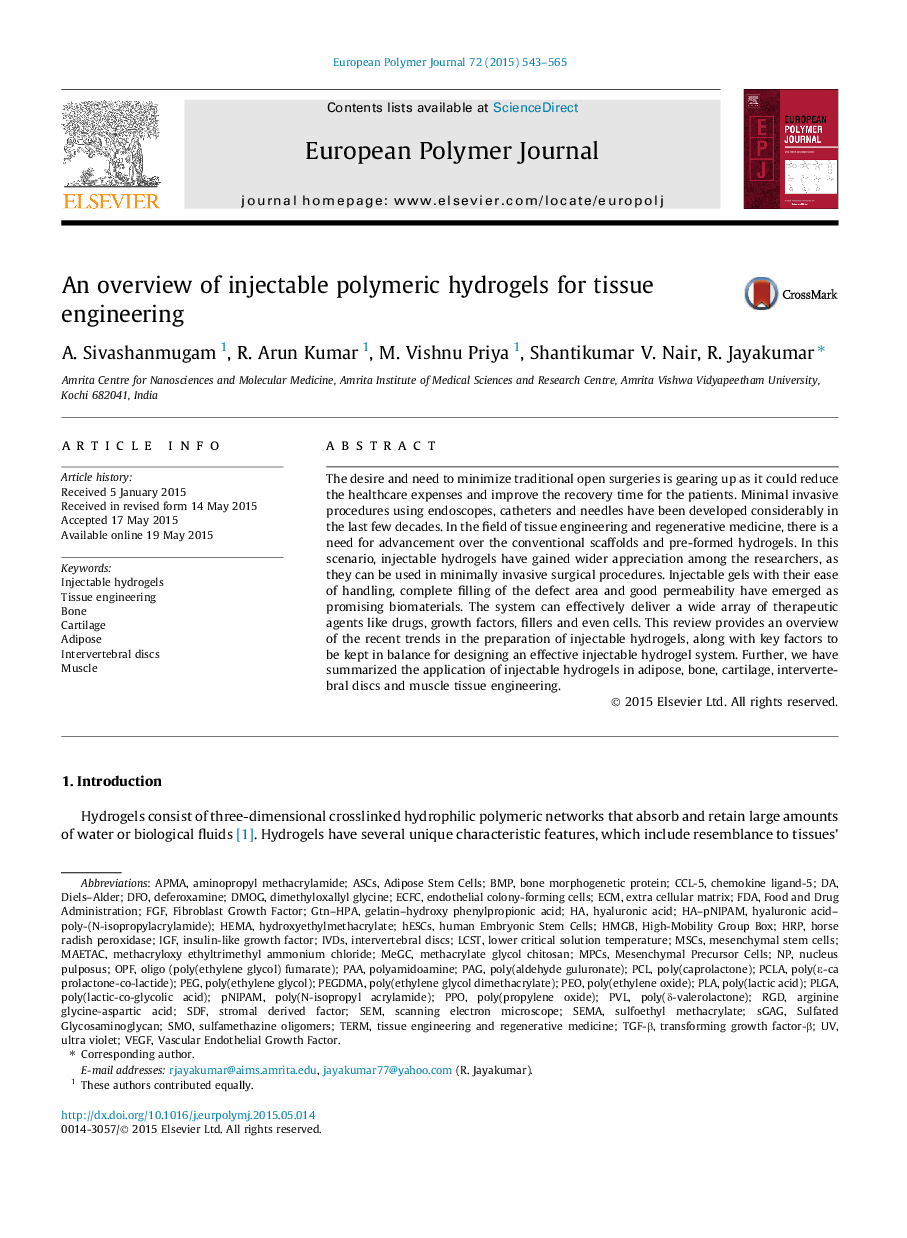| Article ID | Journal | Published Year | Pages | File Type |
|---|---|---|---|---|
| 1394693 | European Polymer Journal | 2015 | 23 Pages |
•Injectable hydrogels have numerous advantages over conventional scaffolds.•Preparation of different polymeric injectable hydrogel systems.•The design considerations for injectable hydrogels.•Incorporation of growth factors, drugs and cells into hydrogels.•Injectable hydrogels for different tissue engineering applications.
The desire and need to minimize traditional open surgeries is gearing up as it could reduce the healthcare expenses and improve the recovery time for the patients. Minimal invasive procedures using endoscopes, catheters and needles have been developed considerably in the last few decades. In the field of tissue engineering and regenerative medicine, there is a need for advancement over the conventional scaffolds and pre-formed hydrogels. In this scenario, injectable hydrogels have gained wider appreciation among the researchers, as they can be used in minimally invasive surgical procedures. Injectable gels with their ease of handling, complete filling of the defect area and good permeability have emerged as promising biomaterials. The system can effectively deliver a wide array of therapeutic agents like drugs, growth factors, fillers and even cells. This review provides an overview of the recent trends in the preparation of injectable hydrogels, along with key factors to be kept in balance for designing an effective injectable hydrogel system. Further, we have summarized the application of injectable hydrogels in adipose, bone, cartilage, intervertebral discs and muscle tissue engineering.
Graphical abstractFigure optionsDownload full-size imageDownload as PowerPoint slide
